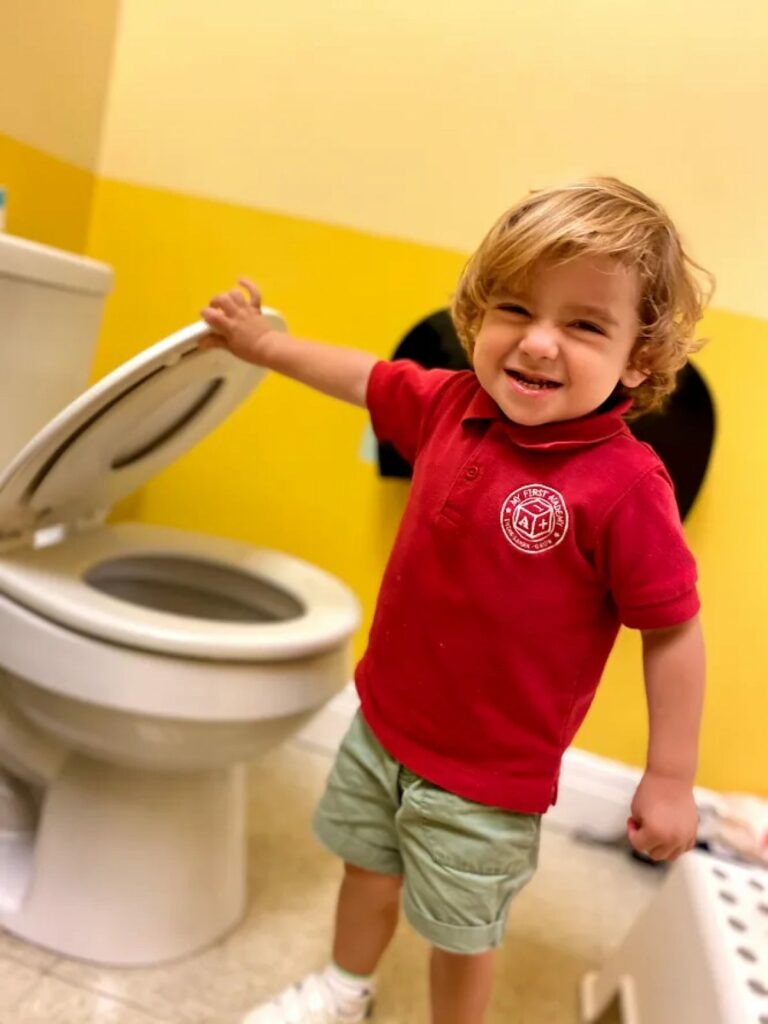Potty Training
Like most good things, potty training takes time. We, as parents, sometimes would like to rush this process for a variety of reasons, and of course the biggest reason will be to save some money by not having to buy pull-ups or diapers. But is your child really ready?
The Potty training process with your child usually begins in the Early Preschool classroom, around their second birthday. The key to success is paying attention to your child’s signals of readiness. Some of these signals are:
- Your child can stay dry for several hours at a time.
- He/she lets you know when they have urinated or had a bowel movement.
- Communicates to you that he/she would like to use the potty.
- Your child can follows simple instructions.
- Can go to the potty, sit down, and get up on his/her own.
- Pulls down his/her training pants on their own.
While boys and girls usually show the readiness signs at similar ages, girls often will complete toilet training sooner than boys. It’s important to remember, though, that every child is unique. Potty training will happen, but only at your child’s pace.
During the potty training process is important to be consistent, and to work as a team with your child’s caregiver. Potty training is a team effort where patience is the key.
At My First Academy, we identify when a child is ready to start the training. We take pride of this process. We propitiate moments for your child to show us the signals. As soon the signals are present we will ask you to bring your child in underwear and with a bag full of extra changing clothes.
We take the children to the restroom every 30-50 minutes, trying to avoid accidents, we are anticipating their need to use the potty. Dr. Dingfelder and the American Academy of Family Physicians (AAFP) said: “If [he is] able to go to the bathroom, praise [him] with statements like, ‘That is great. You should be so proud of yourself.’ If [he doesn’t] go, just say, ‘That is okay, we will just try again later. You are doing a wonderful job trying.’” You can also use some rewards, like stickers or m&m’s. Just find out what motivates your child to complete this task.
It is very important not to show frustration or anger if an accident occurs, this can slow the process, and create an anxiety in your child. Some children can even create the same anxiety by having us celebrating in a loud way their accomplishment, for this reason it is very important to know your child personally and to try to have this process run as naturally as possible. Just remember that during this process: Patience is a Virtue.

